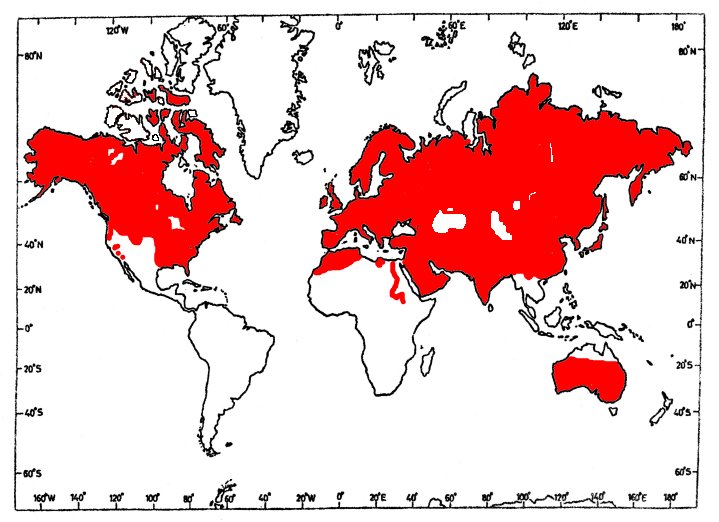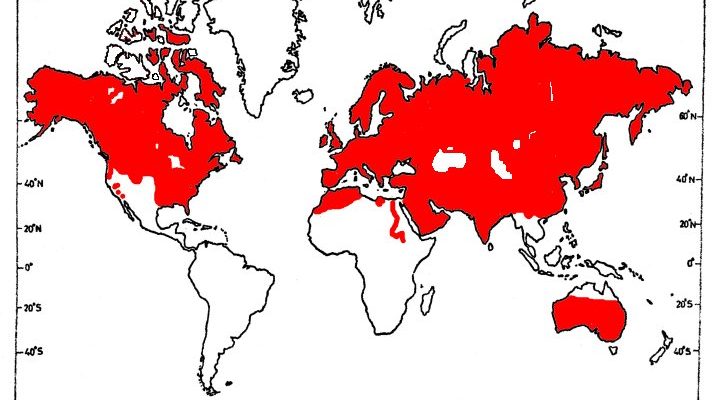
So, where exactly do these cunning little creatures call home? In this article, we’ll delve into the diverse habitats of red foxes and their worldwide distribution. Whether you’re a wildlife enthusiast or just curious about these charming animals, I’ll take you through their homes, explaining how they manage to survive and thrive in different ecosystems.
Understanding Red Fox Habitat
Let’s start by unpacking what we mean by habitat. Essentially, a habitat is the natural environment where an animal lives, providing everything it needs to survive. For red foxes, this includes food, shelter, and space to roam. You’d be surprised at how versatile they can be! Red foxes are found in forests, grasslands, mountains, and even urban areas. Each place offers a unique set of advantages for these clever critters.
In forests, red foxes thrive in the cover of trees and underbrush. This allows them to hunt for small mammals, like rodents, birds, and rabbits, while also giving them security from larger predators. On the other hand, in grasslands, their keen eyesight and sense of smell help them locate food. You might also spot them in urban settings, where they adapt to human presence, scavenging for food in parks or gardens. Isn’t it fascinating how adaptable they are?
Geographical Distribution of Red Foxes
Red foxes have a wide geographical range. They can be found on almost every continent except Antarctica. Their ability to adapt has allowed them to inhabit a variety of climates, from the snowy Arctic tundra to the warm deserts of North Africa. This adaptability is similar to how we adapt our clothing choices based on the weather—layering up in winter and stripping down in the summer.
In North America, red foxes are commonly found in states across the Midwest, Northeast, and even parts of the West Coast. They thrive in both rural and suburban environments, which is one reason they’re often seen hunting in fields and even darting across roadways. It’s important to remember, though, that while red foxes can be found in many areas, they still prefer habitats that provide cover and food sources.
Climate and Seasonal Adaptability
The climate plays a significant role in where red foxes can thrive. They’re not just tough cookies; they can adapt their behavior and breeding patterns based on the seasons. For example, in colder climates, red foxes grow a thicker coat in the winter, allowing them to stay warm while hunting in the snow.
During the spring and summer months, they may shift their hunting strategies to focus on different food sources. You might find them hunting for insects or even fruit. Isn’t that interesting? Just like us, red foxes respond to changes in their environment by adjusting their routines, ensuring they can find food no matter the season.
Urban Red Foxes: Thriving in Human Environments
It’s pretty remarkable how red foxes have learned to coexist with humans, isn’t it? In urban areas, they’ve become quite resourceful. Instead of traditional woodland habitats, some red foxes have made cities their home, navigating through parks and backyards. They often hunt for small pets, discarded food, or even scavenging in trash bins.
You might think this means they’re less wild, but they still maintain their natural instincts. Urban red foxes can be shy and cautious, often avoiding direct contact with people. They have learned to adapt their behavior to fit into our world while still being true to their wild nature. This is similar to how some animals have developed unique habits in cities, showcasing their adaptability and intelligence.
Factors Influencing Distribution
Several factors influence where red foxes live, including availability of food, presence of competitors, and habitat destruction. These factors can help or hinder their populations. For instance, if a specific area has a rich supply of rodents, it becomes an attractive home for a family of red foxes.
Conversely, if a region experiences habitat destruction due to urban development, red foxes may have to migrate to new areas in search of food and shelter. Just like when we have to relocate for work or due to changes in our living situation, these clever animals are constantly finding ways to survive in an ever-changing environment.
Conservation Status and Protection
While red foxes are adaptable, they still face challenges. Habitat loss, hunting, and road traffic can threaten their populations. Fortunately, these animals are generally not endangered, but conservation efforts are essential to maintain healthy populations. Organizations and wildlife enthusiasts are working to protect their habitats and educate communities about living harmoniously with wildlife.
You might wonder what you can do to help. Simple steps like creating wildlife-friendly spaces in your yard can make a big difference. Planting native vegetation or keeping food waste secured can prevent attracting or harming these lovely creatures. Just a little consideration goes a long way in ensuring red foxes continue to thrive.
The Global Perspective: Where to Find Red Foxes
Globally, red foxes are distributed across a variety of regions. In Europe, they are widespread and can be found in both rural and urban settings. In Asia, they stretch from the Middle East to Siberia, adapting to diverse climates. In recent years, they’ve even been spotted in Australia, where they are seen as an invasive species due to their impact on local wildlife.
Imagine how fascinating it is to think of all these red foxes, each adapting to its unique surroundings. Each one has its own story, much like we do. They remind us of the importance of adaptability and resilience in the face of change.
In summary, red foxes are remarkable creatures that thrive in a range of habitats and environments. Whether they are darting through suburban areas or roaming wild forests, they showcase incredible adaptability. Their ability to navigate and thrive in different conditions, while still being true to their wild nature, is something we can all learn from.
By understanding where red foxes live and what influences their habitats, we can appreciate these beautiful animals even more. They remind us of the delicate balance between nature and our urban landscapes, and it’s up to us to ensure they continue to have a place in our world.

